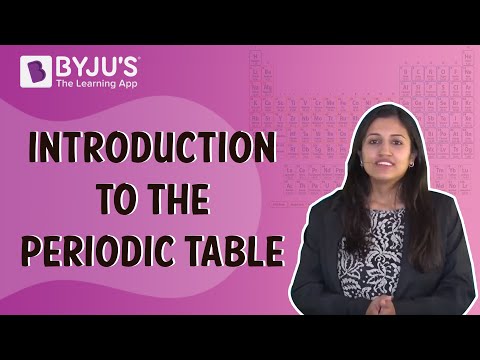The science of chemistry is the study of matter’s characteristics and behaviour. It is a natural science that studies the components that comprise matter, as well as the compounds made up of atoms, molecules, and ions: their composition, structure, qualities, and behaviour, as well as the changes they go through while reacting with other things.
The word chemistry is derived from a variant of the word alchemy, which referred to an ancient range of disciplines that included chemistry, metallurgy, philosophy, astrology, astronomy, mysticism, and medicine.
|
Definition: Chemistry’s definition has evolved over time as new discoveries and hypotheses have added to the science’s utility. Chemistry is the discipline of science that studies the substances that make up matter, their properties and reactions, and how to utilise these reactions to create new compounds. |
Chemistry Questions with Solutions
Q1: What are Atoms?
Answer:
The proton, neutron, and electron make up an atom, which is the smallest recognised division of a chemical element. The central nucleus, which consists of protons and neutrons, holds 99% of the atom’s mass. Negatively charged electrons whirl about the nucleus in a variety of orbital shells.
- The atomic number refers to the number of protons in a nucleus.
- Because the number of protons in an atom equals the number of electrons, atoms have no overall charge.
- An ion is created whenever an atom gains or loses electrons.
Q2: What do you understand about the Periodic Table?
Answer:
The Periodic Table is how researchers have arranged the 100+ elements that constitute all matter. Dmitri Mendeleev, a Russian chemist, proposed it in 1869.
Mendeleev arranged the elements in order of the mass of their electrons, unlike prior attempts to organise the elements by characteristics. He also left empty spaces for items that had yet to be identified. As a result, he was able to forecast what those yet-to-be-discovered elements will be like.
The elements are arranged in the Periodic Table in two ways:
Periods: these run from left to right across the table. The number of protons in the nucleus of the atom rises by one as we proceed in this direction.
Groups: Each vertical column represents a group. Because they usually have the same amount of electrons in their outer shell, groups comprise elements with similar properties.
Q3: What are some of the most important branches in Chemistry?
Answer:
Chemistry is the study of atoms and molecules, as well as their properties. Atoms and molecules are the building blocks of all matter. The following are the five major branches of chemistry:
- Organic chemistry
- Inorganic chemistry
- Physical chemistry
- Biochemistry
- Analytical chemistry
Q4: What is the significance of Organic Chemistry?
Answer:
The study of carbon compounds is what organic chemistry is about. Organic chemistry is significant since it deals with life studies and all chemical reactions that occur in life. Organic chemistry began with the investigation of chemicals derived from living beings.
There are around 7 million different organic compounds known to exist, but only 1.5 million different inorganic compounds are known to exist. The special feature of carbon gives rise to such a large range of organic molecules.
Q5: The S.I unit of temperature is :
(a) Fahrenheit
(b) Celsius
(c) Kelvin
(d) Centigrade
Answer:
(c) Kelvin
Explanation: The kelvin is one of the seven SI base units and is used to measure thermodynamic temperature. We designate another unit of temperature, the degree Celsius (°C), in the SI, which is unusual.
Q6: The product of atomic mass and metal specific heat is about 6.4. This information was provided by:
(a) Dalton’s law
(b) Dulong Petit’s law
(c) Newton’s law
(d) Avogadro’s law
Answer:
(b) Dulong Petit’s law
Explanation: According to Dulong Petit’s law, the product of an element’s atomic mass and specific heat remains constant, equaling 6.4.
Q7: Among isomeric amines, tertiary amines have the lowest boiling points because:
(a) they have highest molecular mass
(b) they are most basic in nature
(c) they are more polar in nature
(d) they do not form hydrogen bonds
Answer:
(d) they do not form hydrogen bonds
Explanation: Hydrogen bonds can be formed by primary and secondary amines, but not by tertiary amines. As a result, they have the lowest boiling points.
Q8: The most electronegative of the following elements is:
- sodium
(b) bromine
(c) oxygen
(d) fluorine
Answer: Option (d)
Q9: 1 mole of K4[Fe(CN)6] contains carbon = 6g atoms. 0.5 mole of K4[Fe(CN)6] contain carbon = 3g atoms. The mass of carbon present in 0.5 mole of K4[Fe(CN)6] is:
(a) 36 g
(b) 18 g
(c) 3.6 g
(d) 1.8 g
Answer:
(a) 36g
Explanation: 1 mole of K4[Fe(CN)6] contain carbon = 6g atoms
0.5 mole of K4[Fe(CN)6] contain carbon = 3g atoms
Mass of carbon in grams = (12g) × [(3g atoms )/(1g atom )] = (12g) × [(3g)/(1g)] = 36g
Q10: What are metallic/interstitial hydrides? How do they differ from molecular hydrides?
Answer:
A hydride is a binary chemical that contains an element and a hydrogen atom.
Metallic hydrides are also known as interstitial hydrides. Metallic/interstitial hydrides are compounds in which transition metals and hydrogen are bonded together. They are the source of many d-Block and f-Block elements. Heat and electricity conductors, these hydrides are.
Molecular hydrides are hydrides that have additional electronegative atoms linked to the H-atom. The electrical conductivity of metallic hydrides is strong, while that of molecular hydrides is low. Metallic hydrides are solid, whereas molecular hydrides are gaseous.
Interstitial or metallic hydrides are formed when hydrogen and transition metals bind, as opposed to molecular hydrides, which contain bonding between an electronegative atom and hydrogen.
Q11: What are the sources of dissolved oxygen in water?
Answer:
The sources of dissolved oxygen in water are photosynthesis, natural aeration, and mechanical aeration. The bulk of oxygen in a pond comes from microscopic algae. Through a process known as photosynthesis, these organisms produce oxygen and release it into the pond water.
Q12: What is the normality of a 1M solution of H3PO4?
(a) 0.5 N
(b) 3.0 N
(c) 2.0 N
(d) 1.0 N
Answer:
(b) 3.0 N
Explanation: H3PO4 is tribasic.
So, N = 3M, i.e., 3 × 1 = 3.0N
Q13: What is the Ozone Layer?
Answer:
The ozone layer is a vast shield that surrounds the Earth and extends 50 kilometres above the planet’s surface. Ozone is a unique oxygen molecule with the formula O3. It can be up to 20 kilometres thick, with the majority of the gas located in the stratosphere.
Our protection from UVB rays is provided by ozone gases. The Sun emits this harmful radiation, which is exceedingly deadly.
The ozone hole, which spans between 21 and 24 million square kilometres and is mostly over Antarctica, is between 21 and 24 million square kilometres in size. Ozone reacts with CFCs, which are pollutants used in refrigeration, causing enormous breaches in this protection layer.
Q14: Differentiate between disinfectants and antiseptics.
Answer:
|
Antiseptics |
Disinfectants |
|---|---|
|
1. They are chemical agents that prevent microorganisms from growing and might kill them. |
1. They are harmful chemicals that kill microorganisms. |
|
2. They are suitable for use on live tissues. |
2. They are not suitable for use on live tissues. |
|
3. They’re typically used to treat wounds, cuts, ulcers, and unhealthy skin. Furacin, soframycin, dettol, and savlon, 0.2% phenol solution. |
3. They are used to kill microorganisms in drains, toilets, and floors, among other places. Phenol (>1% solution) and chlorine are two examples (0.2 to 0.4 ppm). |
Q15: (a) Why do transition elements show variable oxidation states?
- Name the elements showing a maximum number of oxidation states among the first series of transition metals from Sc (Z = 21) to Zn (Z=30)
- Name the element which shows only +3 oxidation state
(b) What is lanthanide contraction? Name an important alloy that contains some of the lanthanoid metals
Answer:
(a) Elements with partially filled d orbitals are known as transition elements (also known as transition metals). The IUPAC defines transition elements as those that have a partially filled d subshell or those that can form stable cations with an incompletely filled d orbital. The electrical configuration of the transition element is (n-1)d5 ns1 or (n-1)d10 ns1.
These elements have varying oxidation states because their valence electrons are in two different sets of orbitals, (n-1)d and ns. Both energy levels can be used to build bonds since the energy difference between them is so minimal. As a result, the oxidation states of transition elements vary.
- The d-subshell of Mn(Z-25) has the most unpaired electrons, thus it has a high oxidation state(+7).
- Scandium (Sc) is the sole element in these series that has a +3 oxidation state.
(b) Lanthanide contraction is the constant decrease in atomic and ionic radii (with the same charge) with rising atomic numbers as we progress from lanthanum to lutetium. Mischmetal is a lanthanide metal alloy that comprises 95% lanthanide metal and 5% Fe, along with traces of S, C, Ca, and Al. In Mg-based alloys, it’s used to create bullets, shells, and lighter flint.
Practise Questions on Chemistry
Q1: Define ‘Amorphous’ and give a few examples of Amorphous Solids.
Q2: Using IUPAC norms write the formula for the following:
- Sodium dicyanidoaurate(I)
- Tetraamminechloridonitrito-N-platinum(IV) sulphate
Q3: (a) Write the colligative property that is used to identify the molecular mass of macromolecules.
(b) In a non-ideal solution, what type of deviation confirms the overview of minimum boiling azeotropes?
Q4: What distinguishes a glass from a solid like quartz? Under which circumstances could quartz be transformed into glass?
Q5: When NiCl2.6H2O is combined with AgNO3, two moles of AgCl are precipitated per mole of the coordination molecule. Write the complex’s structural formula and IUPAC name.
Click the PDF to check the answers for Practice Questions.
Download PDF
Recommended Videos
Introduction to Chemical Bonding

How Will Chemistry Help You Survive Alone on an Island?

Periodic Table – Introduction

Types of Bond: Ionic, Covalent, Coordinate, and Hydrogen Bonds


Comments